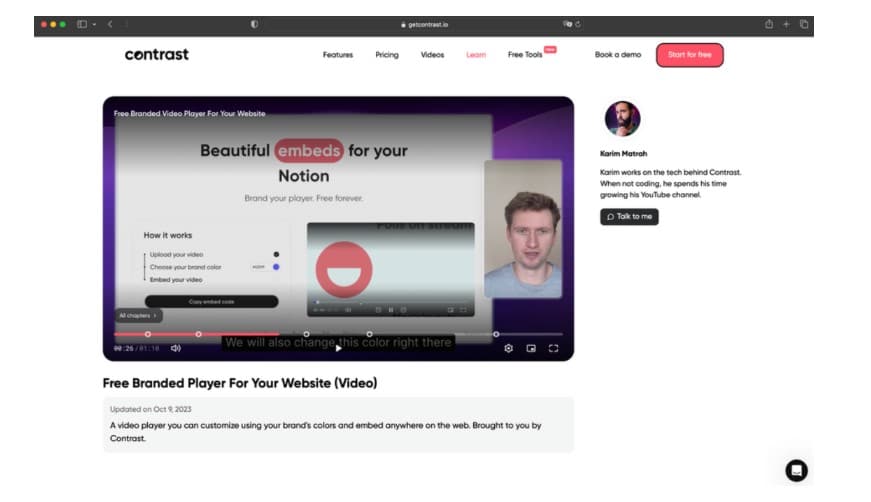PR has always been about telling the right story to the right people. But in a world where almost every search starts on Google, telling that story isn’t enough—it also needs to be easy to find. That’s where SEO comes in, and surprisingly, many PR teams still treat it as an afterthought. The truth is the best coverage in the world loses value if no one can discover it after the initial buzz fades.
The Role of PR in a Digital-First World
PR used to live and die by relationships with journalists and headline-grabbing pitches. Those relationships still matter today, but they’re only part of the picture. Reporters, analysts, and potential customers use search engines to find sources, background information, and stories.
If your press release, article, or thought leadership piece isn’t optimized to appear in those searches, you’re missing a massive opportunity. PR isn’t just about today’s placement anymore—it’s about ensuring your brand and message show up tomorrow, next week, and even next year.
The Problem: Great PR Content, Invisible in Search
PR teams put much effort into crafting press releases, guest articles, and media features that tell great stories. The writing is sharp, the quotes pop and the headlines grab attention. But there’s one big problem—search engines have no clue what to do with that content.
When PR content isn’t optimized for search, it fades fast. It gets a spike of attention when the story first hits, but after that, it becomes nearly impossible for anyone to find—even if they’re actively searching for topics you covered.
Common PR Mistakes Hurting SEO
Here’s why this keeps happening:
- Headlines built for punch, not searchability: Eye-catching headlines are great for readers, but if they don’t include keywords people search for, they won’t rank.
- Too much branded jargon: Internal language, product codenames, and industry buzzwords might make sense to your team, but they rarely match the phrases people search for online.
- No linking strategy: PR teams often forget to add relevant internal links (pointing to key pages on your site) or to encourage external links from coverage, which are both critical for SEO.
- No structured data: Search engines rely on structured data to understand what a page is about, especially for news content, but PR teams rarely add it.
Why This Matters for PR Professionals
Whether pitching a story, publishing a press release, or sharing a guest article, your content isn’t only competing for a journalist’s attention. The goal isn’t to stuff press releases full of awkward keywords or turn creative storytelling into robotic SEO copy. It’s about making your content easy to find without losing the human touch that makes PR powerful in the first place.
That’s where partnering with a trusted marketing agency like Elit-Web can make a real difference. With the right guidance, PR teams can blend search-friendly structure with creative storytelling, ensuring every piece of content gets covered and keeps driving visibility, traffic, and authority long after the initial buzz fades.
PR teams that make SEO part of their process don’t just secure coverage. They build long-term value from every win — that’s how modern PR stays ahead of the curve.
The Solution: SEO Best Practices for PR Professionals
The good news is that PR content doesn’t have to choose between creative storytelling and search visibility. With a few clever tweaks, you can make your content work for people and search engines—giving your stories a much longer shelf life.
1. Keyword Strategy
Start by figuring out what your audience types into Google when looking for information related to your brand, industry, or product. It’s not always the polished, internal terms your team uses—it’s often more straightforward, more direct phrases.
- Use tools like Google Keyword Planner, Ahrefs, or SEMrush to uncover high-intent keywords (the ones people search right before making a decision).

- Balance your branded terms with non-branded phrases people search for, like “best project management software” instead of just your product name.
- Ensure keywords fit naturally into the text—keyword stuffing is outdated and hurts your rankings.
2. Optimized Headlines and Subheadings
Your headlines need to do double duty—they should grab attention and help search engines understand the content’s topic.
- Blend creativity with clarity by including keywords in your headline while keeping it compelling for readers.
- Break up your content with clear, keyword-rich H2 and H3 subheadings. This makes it easier to read and signals how your content is structured to search engines—both of which help your rankings.
3. Linking and Anchor Text
Links are like little breadcrumbs for readers and search engines—they show what content connects to what and help search engines understand the bigger picture of your site. PR teams don’t always think about this, but smart linking makes your content more valuable and easier to find.
- Internal links: Whenever your PR content touches on topics you’ve already covered (like a product launch page, blog post, or case study), link to those pages directly. This helps search engines connect the dots across your site.
- External links: Don’t be afraid to link to trusted industry sources, research reports, or credible news outlets. This adds context, shows your content is well-researched, and helps search engines understand the topic.
- Anchor text matters: Instead of generic links like “click here,” use descriptive text that includes relevant keywords, such as “read our full product launch announcement.”
4. Multimedia and Structured Data
Search engines (and readers) love visuals. If optimized properly, images, charts, and videos make your content more engaging and increase your chances of ranking.
- Image optimization: Add clear, keyword-friendly alt text to every image you upload. This helps search engines understand what’s in the image, making your content more accessible.
- Video embeds: If you’ve got a video interview, product demo, or related webinar, embed it directly into your content. This boosts engagement and gives search engines more signals to work with.

- Schema markup: This is a bit technical but incredibly powerful. Adding Press Release or Article schema helps search engines instantly recognize what type of content they’re looking at and what it’s about. It’s like handing them a cheat sheet for your story.
5. Meta Descriptions and URL Structure
Meta descriptions and URLs might seem small, but they’re prime real estate for search engines and human readers. They’re often the first thing people see when your content appears in search results—so they need to be clear, enticing, and keyword-friendly.
- Meta descriptions that sell the click: Treat them like ad copy. In about 150-160 characters, explain the content and why someone should read it — and naturally include a primary keyword if you can.
- Clean URLs: Long, messy URLs with tracking codes or random numbers confuse search engines and readers alike. If you host press releases or guest posts on your site, use simple, keyword-inclusive URLs like:
/press/new-product-announcement-2025 instead of /pressrelease12345678.
6. Syndication and Link Equity
PR pros love syndication—the more places your story appears, the better. But from an SEO perspective, syndication can dilute your visibility if search engines can’t tell which version is the original.
- Canonical attribution: When your press release gets syndicated across partner sites, ask the outlets to use a canonical tag that points back to the original version on your website. This tells search engines where the content started, so you get credit.
- Negotiate backlinks: Don’t just ask for a byline when contributing a guest article. Ask for a do-follow backlink to your site. Not only does it drive referral traffic, but it also builds your site’s overall authority in search engines’ eyes.
Done right, these steps ensure that your content gets the credit—and the SEO value—it deserves, no matter how widely it’s shared.
Conclusion
The teams that learn to blend creative storytelling with smart SEO aren’t just securing coverage. They’re building lasting visibility, strengthening their brand’s authority, and turning every earned media win into a long-term traffic driver.
PR success isn’t just about getting covered anymore. It’s about getting found—and staying found—long after the news cycle moves on.



